A Beginner’s Guide To Crop Rotation With Garden Presenter Ade Sellars


Elizabeth is a Permaculture Garden Designer, Sustainability Consultant and Professional Writer, working as an advocate for positive change. She graduated from the University of St. Andrews with an MA in English and Philosophy and obtained a Diploma in Applied Permaculture Design from the Permaculture Association.
Reviewed By COLIN SKELLY

Colin is a Horticulturist and Horticultural Consultant with experience in a range of practical and managerial roles across heritage, commercial and public horticulture. He holds the Royal Horticultural Society’s Master of Horticulture award and has a particular interest in horticultural ecology and naturalistic planting for habitat and climate resilience.
Contributions From ADE SELLARS

Ade is a professional Gardener, Presenter, Writer and Content Producer, with a passion for growing food in his kitchen garden. Along with his wife Sophie, they co-write the award-winning garden and food blog, Agents of Field. Having spent twenty years working in television as a Director and Editor, Ade re-trained and gained his RHS qualifications. In 2018 he gave up the London life to move to rural Suffolk to build his own kitchen garden and lead ‘The Good Life’.

Kim Stoddart is a climate change gardener and the co-author of ‘The Climate Change Garden’, which was updated and republished in February 2023. She teaches courses for the RHS and has also written for publications such as The Guardian and Country Smallholding.
IN THIS GUIDE
Understanding crop rotation can go a long way toward helping you manage disease and maintain fertility in an organic garden.
In this beginner’s guide to crop rotation you will find out what crop rotation means, why we practice it, and the crops for which it is most important.
We’ll give you some tips for crop rotation and some examples which will help you in making planting plans and determining the layout of plants in your garden.
What Is Crop Rotation?
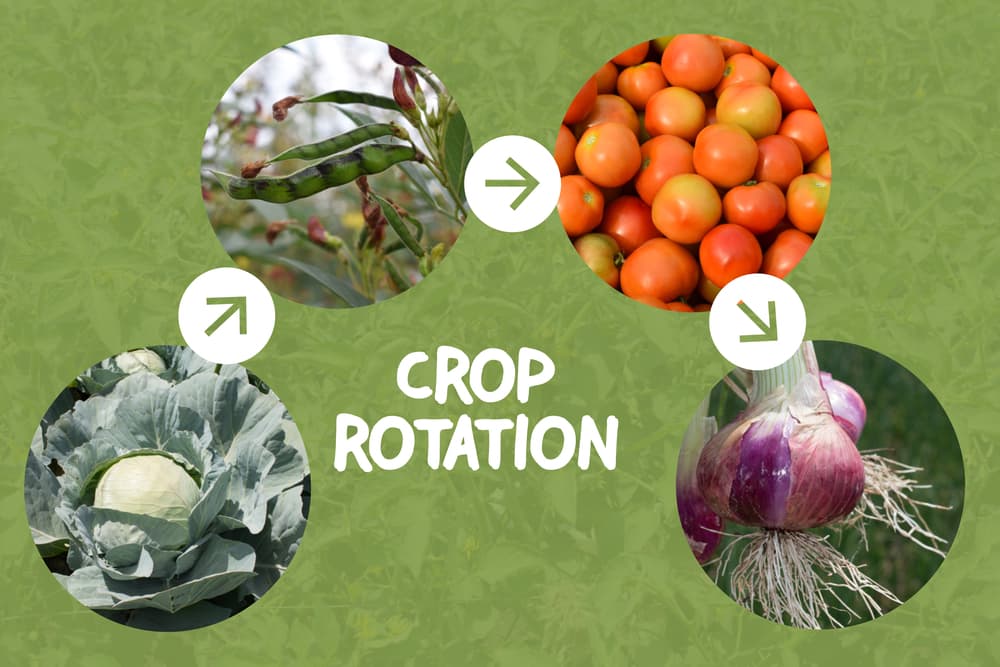
Crop rotation can be a simple concept, but it is one which can cause some confusion, especially for new gardeners.
It simply involves taking steps to make sure that you do not grow the same plant family in the same part of your garden over more than one year.
Rather than growing, say, tomatoes or potatoes in the same bed year after year, you will ‘rotate’ them between a number of different raised beds or growing areas over the course of several years.
Why Practice Crop Rotation?
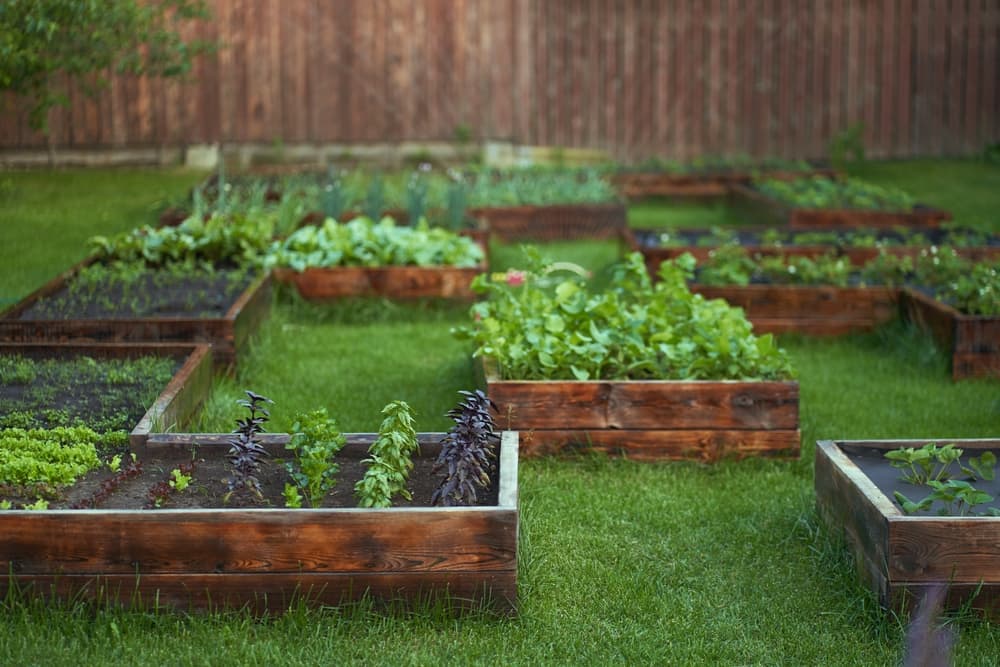
Before we delve into crop rotation a little deeper, it is important to look into why this can be a beneficial practice when it comes to your annual crops.
We practice crop rotation because it can prevent or decrease the likelihood of a range of common issues, and bring a range of benefits.
We practice crop rotation to:
- Make sure different garden areas get the nitrogen (and other nutrients) they need.1Value of crop rotation in nitrogen management. (n.d.). Iowa State University. Retrieved March 14, 2023, from https://crops.extension.iastate.edu/encyclopedia/value-crop-rotation-nitrogen-management
- To prevent nutrients from being excessively depleted from the soil.2Crop Rotation Monitoring. (2022, August 11). EOS Data Analytics. Retrieved March 14, 2023, from https://eos.com/industries/agriculture/crop-rotation/
- In order to reduce disease build-up in the soil of our growing areas.3Managing Plant Diseases With Crop Rotation. (2022, February 9). SARE. Retrieved March 14, 2023, from https://www.sare.org/publications/crop-rotation-on-organic-farms/physical-and-biological-processes-in-crop-production/managing-plant-diseases-with-crop-rotation/
- To reduce pest problems (especially those pests which spend the winter in the soil in your garden).
- Keep crops healthier by taking care of the soil.4Crop Rotations. (2020, December 15). Rodale Institute. Retrieved March 14, 2023, from https://rodaleinstitute.org/why-organic/organic-farming-practices/crop-rotations/
Which Crops Need Rotating?
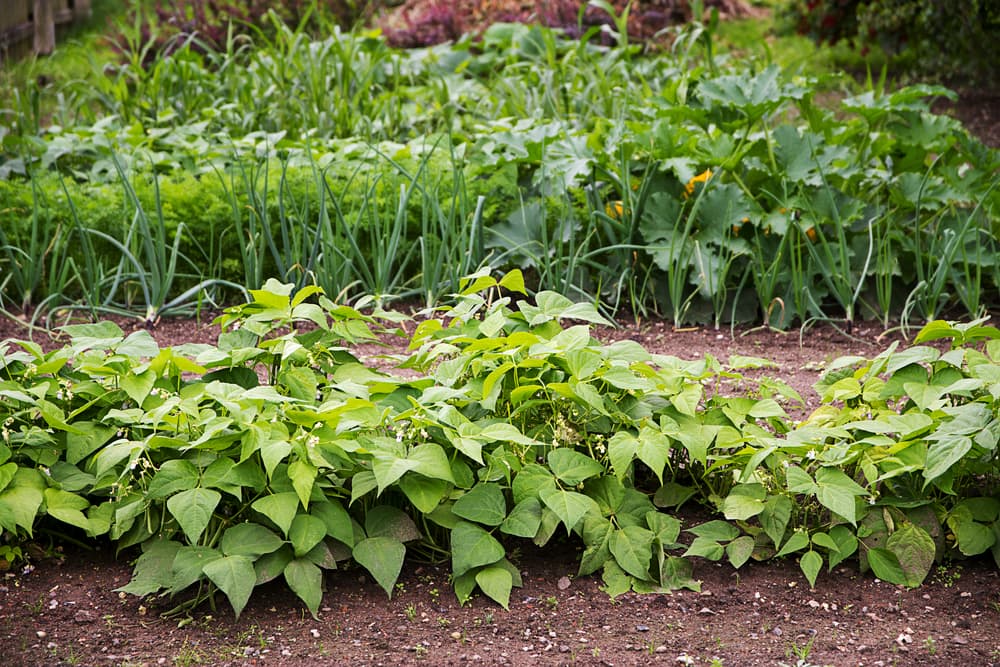
Crop rotation is often beneficial for all the reasons mentioned above, but you should note that it is only strictly essential for a number of specific crop families.
Some plants can definitely cause or encounter issues when grown in one spot year in year out, while others will be perfectly happy remaining in one growing area as long as their needs are all taken care of.
“Some crops, such as Asparagus and Rhubarb, stay in the same ground for a number of years rather than rotating as they are perennial rather than annual crops,” shares Colin Skelly, an RHS Master Horticulturist.
“Soil care for perennial crops involves weeding (as the ground will not be turned) and mulching in late winter.”
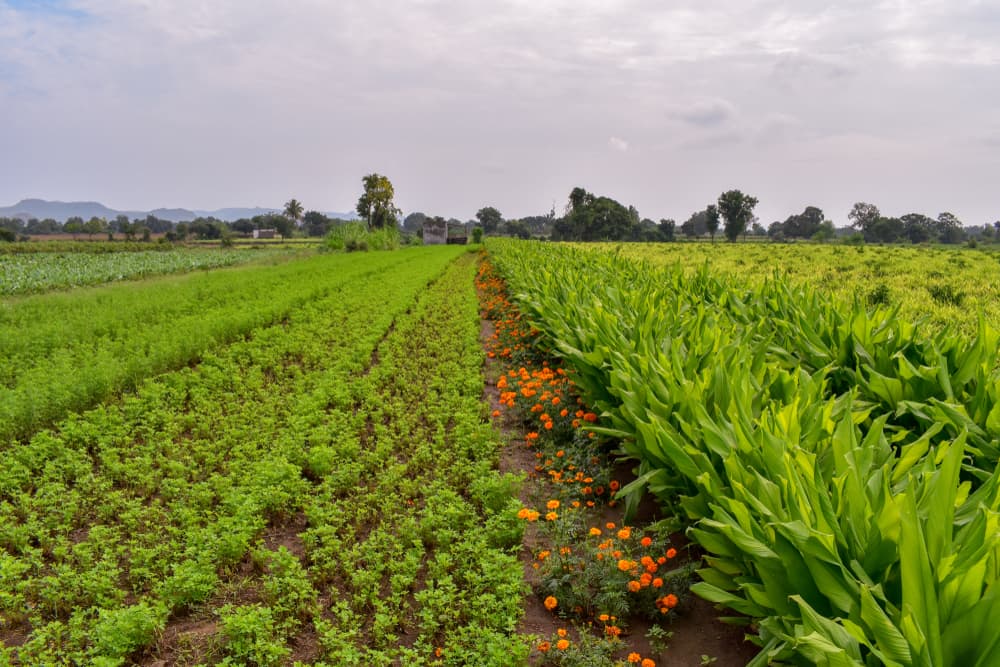
Identifying the families of plants which most benefit from crop rotation, and which can most suffer if grown in the same area year after year is important.
Three key plant families to think about are:
- Solanaceae – potatoes, peppers, tomatoes, aubergines etc.
- Brassicaceae (Cabbage family) – cabbage, cauliflower, broccoli, kale and so on…
- Alliums (Onion family) – onions, garlic, leeks etc.
Root crops like carrots, parsnips, beetroot etc. can also be more prone to problems if grown in one bed or area year after year – though are not quite as problematic as the three families mentioned above.
Members in the tomato/potato family grown in the same location for multiple years are more likely to develop issues with fungal disease – blight for example.
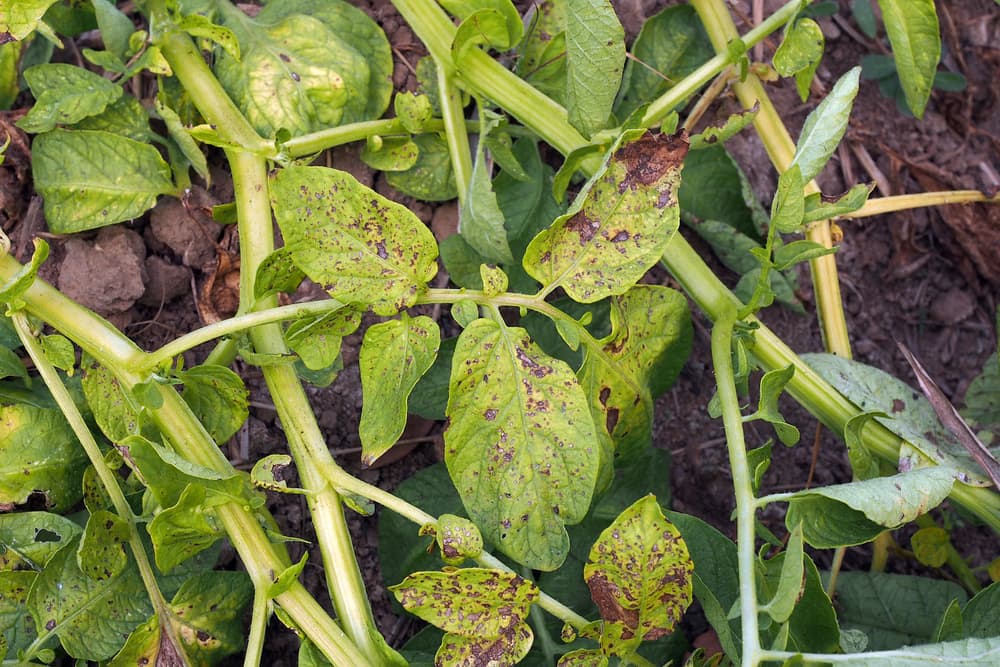
Cabbage family plants are hungry plants which will deplete nutrients such as soil nitrogen when grown in one spot.5Nduwumuremyi, A., & Sylvestre, H. (2020, December 18). Effects of Organic and Mineral Fertilizers on Soil Nutrients and Yield of Headed Cabbages. ResearchGate. Retrieved March 14, 2023, from https://www.researchgate.net/publication/347463824_Effects_of_Organic_and_Mineral_Fertilizers_on_Soil_Nutrients_and_Yield_of_Headed_Cabbages_Brassica_orelacea
When crop rotation is not practised, these crops are also more likely to develop issues like root rot.
Onions (as well as some root crops like carrots) are also more likely to succumb to disease if you grow them in the same place year in year out.
Adding Nitrogen Through Rotation
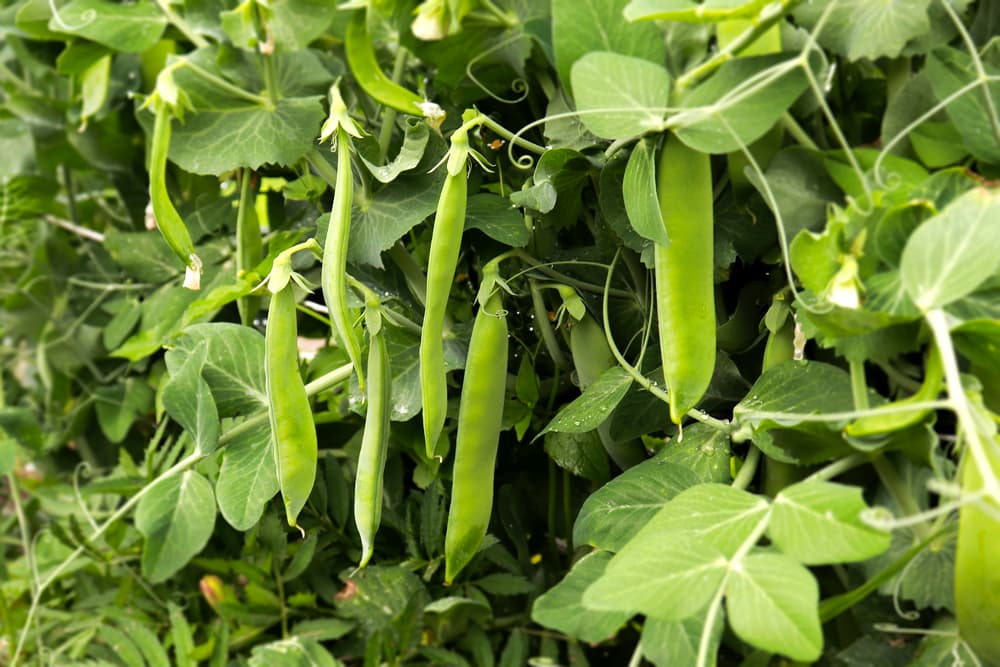
As well as thinking about the different families mentioned above, when developing a crop rotation scheme it is important also to think about crops which it is beneficial to move between your different growing areas.
Legumes (peas and beans) are one of the most important pieces of the puzzle in a successful crop rotation scheme.
These plants will not really suffer themselves if grown in one specific location over the years, but the benefits they bring mean that it is a good idea to move them around each year.
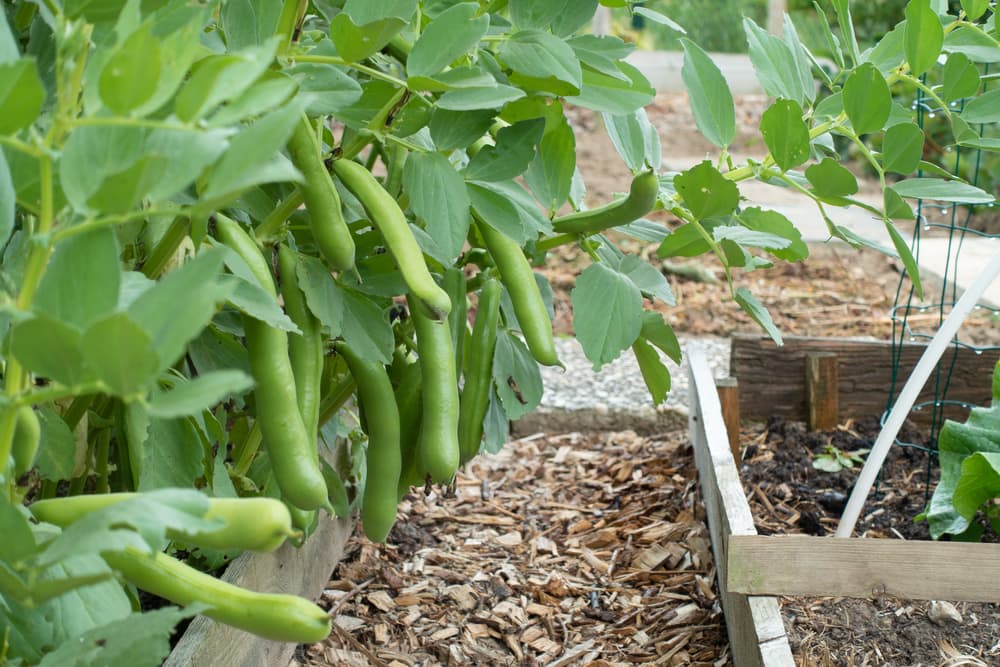
Peas and beans (and other legumes) are nitrogen fixers.6Nitrogen Fixing Bacteria. (n.d.). Tropical Permaculture. Retrieved March 14, 2023, from https://www.tropicalpermaculture.com/nitrogen-fixing-bacteria.html
This means that they have symbiotic relationships with bacteria on their roots which are able to convert atmospheric nitrogen and make it available in the soil.7Genetic and Molecular Mechanisms Underlying Symbiotic Specificity in Legume-Rhizobium Interactions. (n.d.). Frontiers. Retrieved March 14, 2023, from https://www.frontiersin.org/articles/10.3389/fpls.2018.00313/full
Some of that nitrogen is used by the plants themselves, but some will remain in the soil and can be used by plants which follow them in rotation.
Planning Your Growing
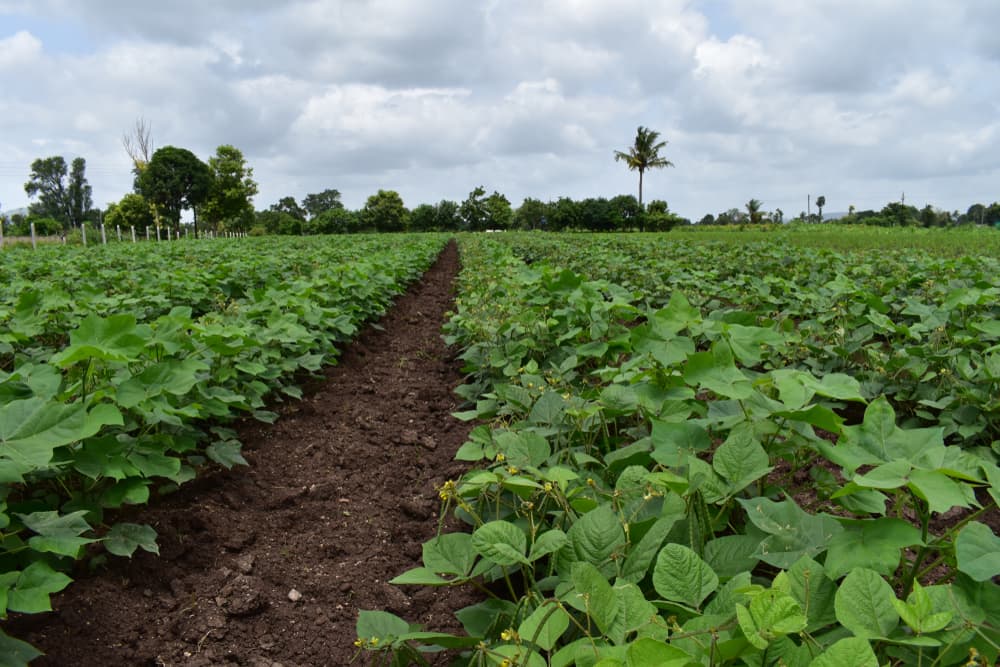
When planning for crop rotation then, it is important to remember the key plant families, both those which need crop rotation to prevent problems, and the legumes which will benefit other plants more when moved around.
Usually, gardeners will aim for either a three-year or four-year crop rotation plan which includes these key plant families.
There is certainly some flexibility, and of course you can also grow a range of other plants to include in a crop rotation plan for annual food production, but the core of a plan will often look as follows:
3 Year Crop Rotation Example
Year One:
- BED/AREA 1: POTATOES
- BED/AREA 2: LEGUMES, ROOTS & ONIONS
- BED/AREA 3: CABBAGE FAMILY PLANTS
Year Two:
- BED/AREA 1: LEGUMES, ROOTS & ONIONS
- BED/AREA 2: CABBAGE FAMILY PLANTS
- BED/AREA 3: POTATOES
Year Three:
- BED/AREA 1: CABBAGE FAMILY PLANTS
- BED/AREA 2: POTATOES
- BED/AREA 3: LEGUMES, ROOTS & ONIONS
4 Year Crop Rotation Example
Year One:
- BED/AREA 1: LEGUMES
- BED/AREA 2: BRASSICAS
- BED/AREA 3: POTATOES
- BED/AREA 4: ONIONS / ROOT CROPS
Year Two:
- BED/AREA 1: BRASSICAS
- BED/AREA 2: POTATOES
- BED/AREA 3: ONIONS / ROOT CROPS
- BED/AREA 4: LEGUMES
Year Three:
- BED/AREA 1: POTATOES
- BED/AREA 2: ONIONS / ROOT CROPS
- BED/AREA 3: LEGUMES
- BED/AREA 4: BRASSICAS
Year Four:
- BED/AREA 1: ONIONS / ROOT CROPS
- BED/AREA 2: LEGUMES
- BED/AREA 3: BRASSICAS
- BED/AREA 4: POTATOES
Key Tips For Crop Rotation
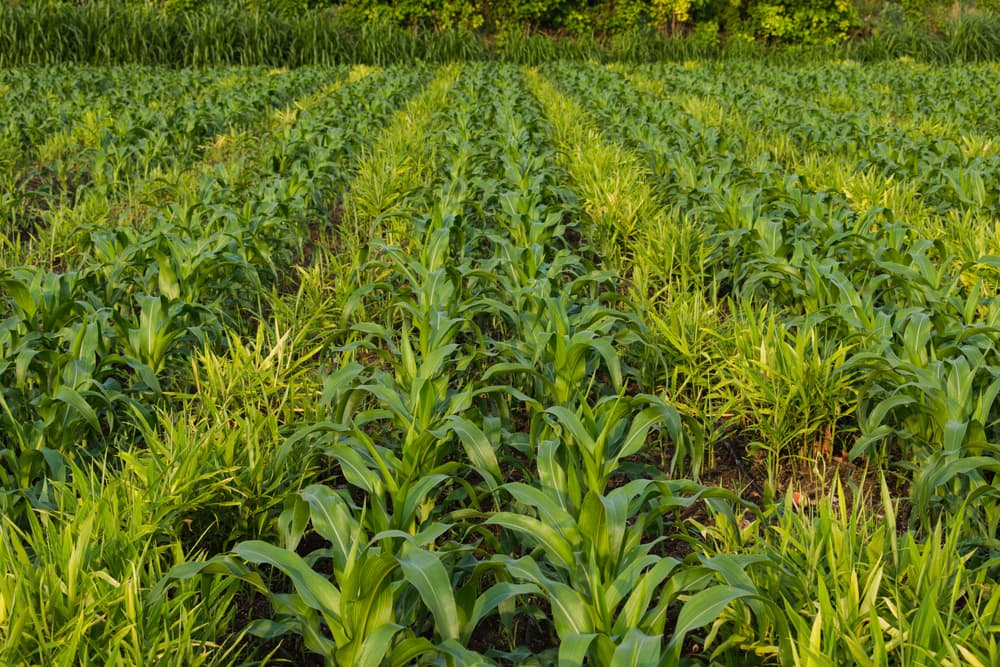
In both of the above schemes, you can see that certain types of crop will always follow others.
There are benefits to the order of the crop rotation as well as just rotating the crops.
It is often recommended to:
- Follow legumes with cabbage family crops, which really appreciate nitrogen.
- Follow potatoes with onions and root crops, since the potatoes help break up the soil creating good conditions for these crops to grow.
However, there are few hard and fast rules and you can experiment to see which plant combinations and crop rotation plans work best in your garden.
Combining Crop Rotation & Companion Planting
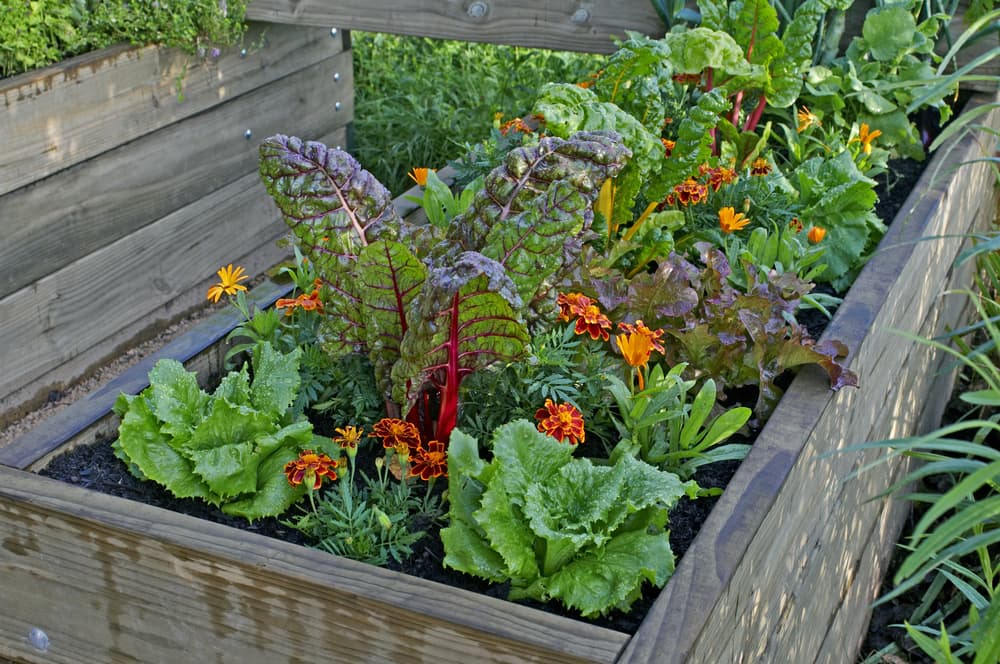
One important thing to remember is that your beds should not only contain the main crops outlined in the crop rotation schemes above.
Though it can be helpful to pare things back in this way to understand the principles of crop rotation, you should understand that growing companion plants alongside these key crops is another important strategy in keeping plants and soil healthy and improving your yields.
Many people get confused about how to combine the idea of crop rotation with the idea of companion planting – but the two ideas can be combined in a range of effective ways.

The key is to begin with the main plant families which require crop rotation, then to build up polycultures of diverse plants around those main plant families.
For example, alongside potatoes you might grow additional nitrogen fixers, like peas.
You might also grow lettuce and radishes in the gaps between potatoes before they need the space.
Growing onions and carrots together is already an example of companion planting, and growing them together can help in pest control for both.
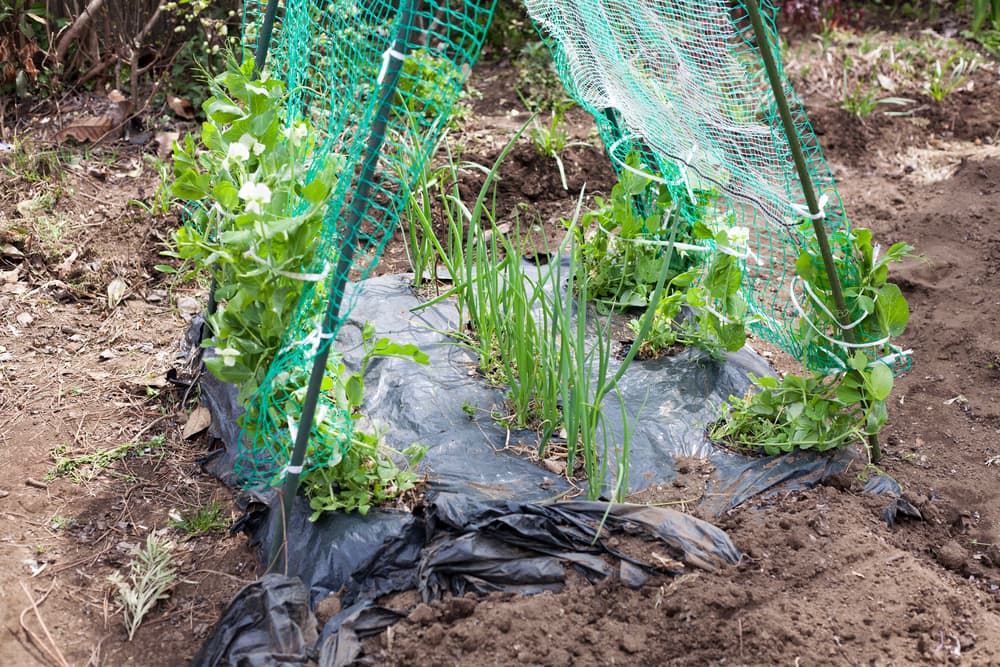
Legume beds might also contain a number of other plants which benefit from nitrogen fixation.
Leafy crops in summer may also benefit from the shade cast by taller peas and beans.
Brassicas can appreciate the company of beetroots, and celery, and growing low-growing lettuce and other leafy greens can also help you make the most of your space.
Onion family plants may also sometimes be good companions for brassicas, but make sure you think about crop rotation and amend plans accordingly if you wish to grow them together, so you do not have onions grown too frequently in the same areas.
Year-Round Growing
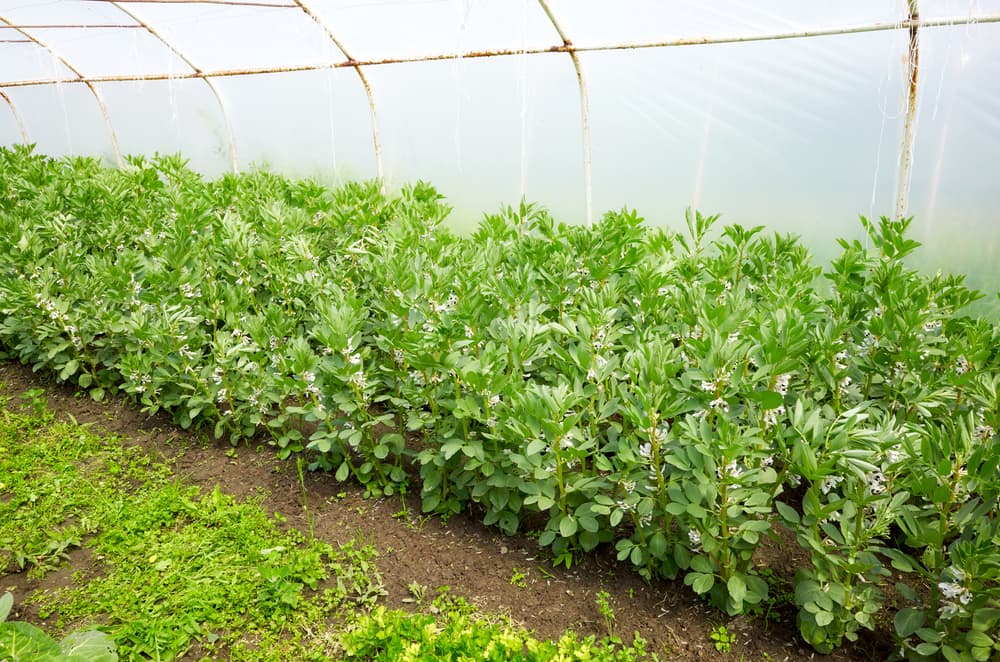
Another thing that can confuse people when creating crop rotation plans is how to work out plans for year-round growing.
Ideally, no beds or growing areas in your garden should be left bare at any time.
Even over the winter months, it is best for soil health to keep a living root in the soil and keep it covered.
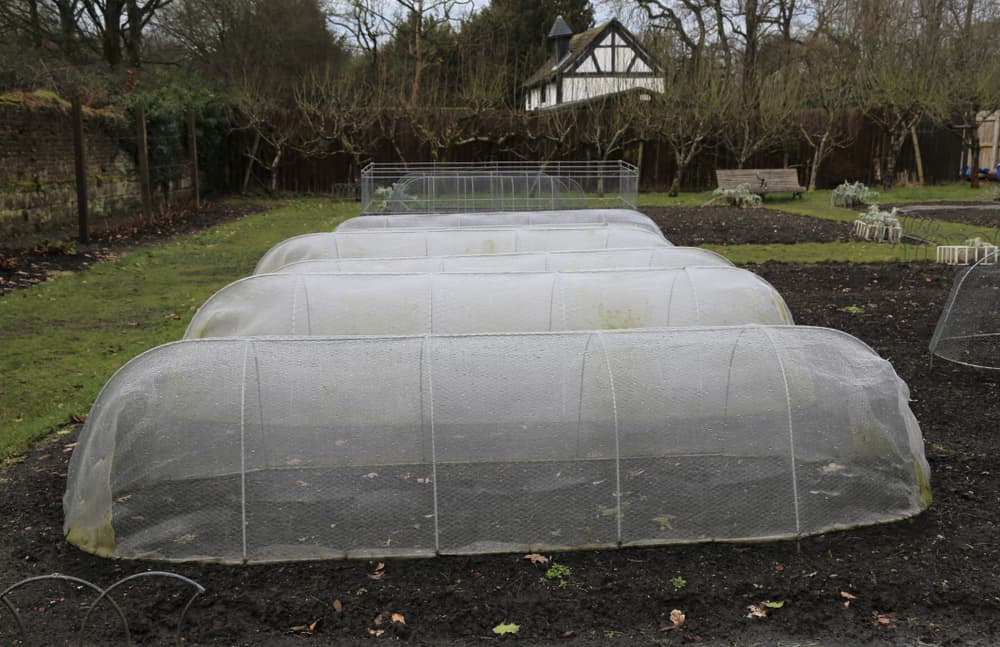
Especially in a polytunnel or other undercover growing area, you will be able to grow your own not just in summer, but all year round.
With some careful planning, you can create plans which allow for crop rotation, companion planting and year-round cultivation.
For example, overwintering broad beans or peas might be followed by brassicas in early summer.
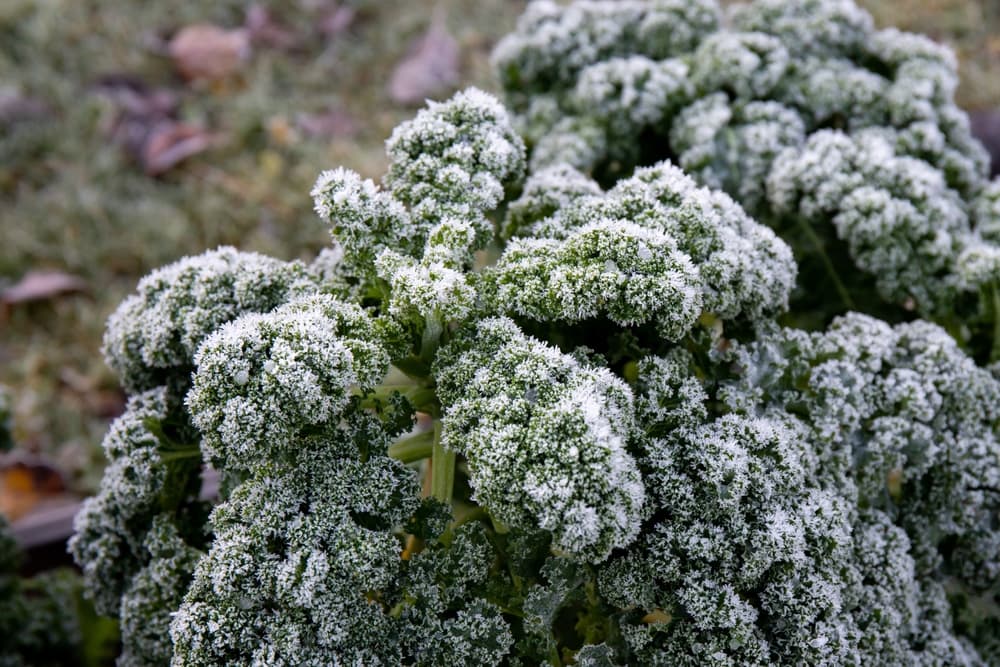
Overwintering brassicas might be followed by French beans, squash and sweetcorn.
Alliums and roots grown over winter might be followed by tomatoes and companion plants.
These are just a few examples and there are many ways to create successful crop rotation plans, even when you are using the growing areas year-round.
Growing Gaps
When growing year-round, it is important to think about how you can avoid any gaps in your planting schemes.
You should not leave areas of bare soil when other plants are not going to be positioned right away.
Where you will not be growing crops immediately, cover crops and green manures can be used in rotation plans.
These protect the soil and are often chopped and dropped to maintain fertility in the areas in question.
Cover crops and green manures will also allow you to protect all outdoor growing areas over the winter months.

However, sometimes, you can strategically use gaps in your planting to your advantage, as Garden Writer Kim Stoddart shares:
“Free planting is the method of gardening I have employed for a number of years now in the vegetable garden and it is a slight alternative to crop rotation.
“It is also known as polyculture in permaculture circles. The basis is that I allow space between plants of the same family rather than planting in crop rotational blocks.
“This makes it much harder for pests to find what they are looking for and for diseases to spread.
“You can also grow on a lot of plants for longer than you would otherwise imagine which can help boost resilience massively.
“For example, purple-sprouting broccoli and chard can actually grow on for a number of years if you just cut them right back when they start trying to flower.”
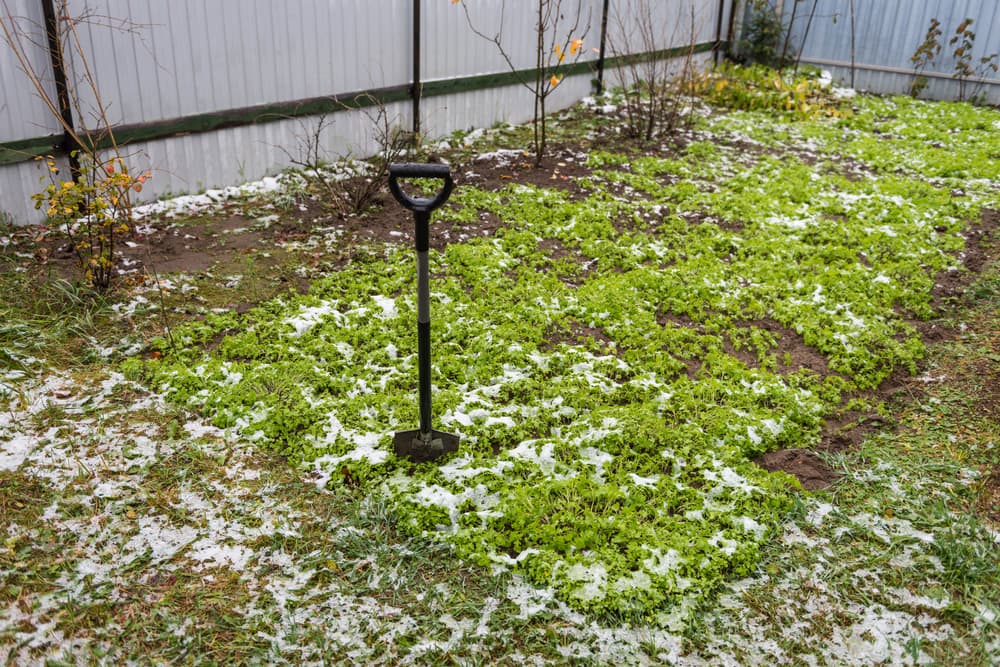
The ideas behind crop rotation are clear and simple to understand – companion planting and year-round growing can add a little complexity.
But with a little work, you should be able to create excellent plans for your garden, to keep it healthy and make the most of your space.
References
- 1Value of crop rotation in nitrogen management. (n.d.). Iowa State University. Retrieved March 14, 2023, from https://crops.extension.iastate.edu/encyclopedia/value-crop-rotation-nitrogen-management
- 2Crop Rotation Monitoring. (2022, August 11). EOS Data Analytics. Retrieved March 14, 2023, from https://eos.com/industries/agriculture/crop-rotation/
- 3Managing Plant Diseases With Crop Rotation. (2022, February 9). SARE. Retrieved March 14, 2023, from https://www.sare.org/publications/crop-rotation-on-organic-farms/physical-and-biological-processes-in-crop-production/managing-plant-diseases-with-crop-rotation/
- 4Crop Rotations. (2020, December 15). Rodale Institute. Retrieved March 14, 2023, from https://rodaleinstitute.org/why-organic/organic-farming-practices/crop-rotations/
- 5Nduwumuremyi, A., & Sylvestre, H. (2020, December 18). Effects of Organic and Mineral Fertilizers on Soil Nutrients and Yield of Headed Cabbages. ResearchGate. Retrieved March 14, 2023, from https://www.researchgate.net/publication/347463824_Effects_of_Organic_and_Mineral_Fertilizers_on_Soil_Nutrients_and_Yield_of_Headed_Cabbages_Brassica_orelacea
- 6Nitrogen Fixing Bacteria. (n.d.). Tropical Permaculture. Retrieved March 14, 2023, from https://www.tropicalpermaculture.com/nitrogen-fixing-bacteria.html
- 7Genetic and Molecular Mechanisms Underlying Symbiotic Specificity in Legume-Rhizobium Interactions. (n.d.). Frontiers. Retrieved March 14, 2023, from https://www.frontiersin.org/articles/10.3389/fpls.2018.00313/full
